History GK From IAS Exam 2010 and 2011:
1. Among the following, who was not a proponent of the Bhakti cult?
(A) Nagarjuna
(B) Tukaram
(C) Tyagaraja
(D) Vallabhacharya
Ans: Nagarjuna (A)
2. Why did Buddhism start declining in India in early medieval times?
(1) Buddha was by that time considered as one of the incarnations of Vishnu and thus became a part of Vaishnavism.
(2) The invading tribes from Central Asia till the time of last Gupta king adopted Hinduism and persecuted Buddhists.
(3) Kings of Gupta dynasty were strongly opposed to Buddhism.
Which of the statements given above is/are correct?
(A) 1 only
(B) 1 and 3 only
(C) 2 and 3 only
(D) 1, 2 and 3
Ans: 1 only (A)
3. What was the immediate cause for the launch of the Swadeshi movement?
(A) The Partition of Bengal done by Lord Curzon
(B) A sentence of 18 months rigorous imprisonment imposed on Lokmanya Tilak
(C) The arrest and deportation of Lala Lajpat Rai and Ajit Singh and passing of the Punjab Colonization Bills
(D) Death sentence pronounced on the Chapkar brother
Ans: The Partiton of Bengal done by Lord Curzon (A)
4. For the Karachi session of Indian National Congress in 1931 presided over by Sardar Patel, who drafted the Resolution on Fundamental Rights and Economic Programme?
(A) Mahatma Gandhi
(B) Pandit Jawaharlal Nehru
(C) Dr. Rajendra Prasad
(D) Dr. B.R.Ambedkar
Ans: Pandit Jawaharlal Nehru (B)
5. After Quit India Movement, C.Rajagopalachari issued a pamphlet entitled “The Way Out”. Which one of the following was proposed in this pamphlet?
(A) The establishment of a ‘War Advisory Council’ composed of representatives of British India and the Indian States.
(B) Reconstitution of the Central Executive Council in such a way that all its members, except the Governor-General and the Commander-in-Chief, should be Indian leaders.
(C) Fresh elections to the Central and Provincial Legislatures to be held at the end of 1945 and the Constitution-making body to be convened as soon as possible
(D) A solution for the constitutional deadlock
Ans: A solution for the constitutional deadlock (D)
6. Who among the following were official Congress negotiators with Cripps Mission?
(A) Mahatma Gandhi and Sardar Patel
(B) Acharya JB Kripalani and C Rajagopalachari
(C) Pandit Nehru and Maulana Azad
(D) Dr Rajendra Prasad and Rafi Ahmed Kidwai
Ans: Pandit Nehru and Maulana Azad (C)
7. Consider the following statements:
(1) The “Bombay Manifesto” signed in 1936 openly opposed the preaching of socialist ideals.
(2) It evoked support from a large section of the business community from all across India.
Which of the statements given above is/are correct?
(A) 1 only
(B) 2 only
(C) Both 1 and 2
(D) Neither 1 nor 2
Ans: 1 only (A)
8. Consider the following statements:
(1) Dr. Rajendra Prasad persuaded Mahatma Gandhi to come to Champaran to investigate the problem of the peasants.
(2) Acharya J.B. Kriplani was one of Mahatma Gandhi’s colleagues in his Champaran investigation.
Which of the statements given above is/are correct?
(A) 1 only
(B) 2 only
(C) Both 1 and 2
(D) Neither 1 nor 2
Ans: 2 only (B)
9. Four resolutions were passed at the famous Calcutta session of Indian National Congress in 1906. The question of either retention or of rejection of these four resolutions became the cause of a split in Congress at the next Congress session held in Surat in 1907. Which one of the following was not one of those resolutions?
(A) Annulment of partitions of Bengal
(B) Boycott
(C) National Education
(D) Swadeshi
Ans: Annulment of partitions of Bengal (A)
10. The “Instrument of Instructions” contained in the Government of India Act, 1935 have been incorporated in the Constitution of India in the year 1950 as
(A) Fundamental Rights
(B) Directive Principles of State Policy
(C) Extent of Executive Power of State
(D) Conduct of business of the Government of India
Ans: Directive Principles of State Policy (B)
11. With reference to Simon Commission’s recommendations, which one of the following statements is correct?
(A) It recommended the replacement of diarchy with responsible government in the provinces
(B) It proposed the setting up of interprovincial council under the Home Department
(C) It suggested the abolition of the bicameral legislature at the Centre
(D) It recommended the creation of Indian Police Service with a provision for increased pay and allowances for British recruits as compared to Indian Recruits
Ans: It recommended the replacement of diarchy with responsible government in the provinces (A)
12. By a regulation in 1793, the District Collector was deprived of his judicial powers and made the collecting agent only. What was the reason for such a regulation?
(A) Lord Cornwallis felt that the district collector’s efficiency of revenue collection would enormously increase without the burden of additional work.
(B) Lord Cornwallis felt that judicial power should compulsorily be in the hands of Europeans while Indians can be given the job of revenue collection in the districts.
(C) Lord Cornwallis was alarmed at the extent of power concentrated in the district collector and felt that such absolute power was undesirable in one person.
(D) The judicial work demanded a deep knowledge of India and good training in law and Lord Cornwallis felt that district collector should be only a revenue collector.
Ans: Lord Cornwallis felt that the district collector’s efficiency of revenue collection would enormously increase without the burden of additional work (A)
13. What was the immediate reason for Ahmad Shah Abdali to invade India and fight the third battle of Panipat?
(A) He wanted to avenge the expulsion by Marathas of his Viceroy Timur Shah from Lahore.
(B) The frustrated Governor of Jalandhar Adina Beg Khan invited him to invade Punjab.
(C) He wanted to punish Mughal administration for non-payment of the revenues of the Chahar Mahal (Gujarat, Aurangabad, Sialkot and Pasrur).
(D) He wanted to annex all the fertile plains of Punjab up to the borders of Delhi in his kingdom.
Ans: He wanted to avenge the expulsion by Marathas of his Viceroy Timur Shah from Lahore (A)
14. Who among the following Governor Generals created the Covenanted Civil Service of India which later came to be known as the Indian Civil Service?
(A) Warren Hastings
(B) Wellesley
(C) Cornwallis
(D) William Bentinck
Ans: Cornwallis (C)
15. With reference to Pondicherry (now Puducherry), consider the following statements:
(1) The first European power t6 occupy Pondicherry were the Portuguese.
(2) The second European power to occupy Pondicherry were the French.
(3) The English never occupied Pondicherry.
Which of the statements given above is/are correct?
(A) 1 only
(B) 2 and 3 only
(C) 3 only
(D) 1, 2 and 3
Ans: 1 only (A)
16. There are only two known examples of cave paintings of the Gupta period in ancient India. One of these is paintings of Ajanta caves. Where is the other surviving example of Gupta paintings?
(A) Nasik Caves
(B) Ellora Caves
(C) Lomas Rishi Cave
(D) Bagh Caves
Ans: Bagh Caves (D)
17. What was the purpose with which Sir William Wedderburn and W.S. Caine had set up the Indian Parliamentary Committee in 1893?
(A) To agitate for Indian political reforms in the House of Commons
(B) To campaign for the entry of Indians into the imperial judiciary
(C) To facilitate a discussion on India’s Independence in the British Parliament
(D) To agitate for the entry of eminent Indians into the British Parliament
Ans: To agitate for Indian political reforms in the House of Commons (A)
18. With reference to the period of colonial rule in India, “Home Charges” formed an important part of the drain of wealth from India. Which of the following funds constituted “Home Charges”?
(1) Funds used to support the India Office in London.
(2) Funds used to pay salaries and pensions of British personnel engaged in India.
(3) Funds used for waging wars outside India by the British.
Select the correct answer using the codes given below
(A) 1 only
(B) 1 and 2 only
(C) 2 and 3 only
(D) 1, 2 and 3
Ans: 1, 2 and 3 (D)
19. The tendency for increased litigation was visible after the introduction of the land settlement system of Lord Cornwallis in 1793. The reason for this is normally traced to which of the following provisions?
(A) Making Zamindar’s position stronger vis-a-vis the Ryot
(B) Making East India Company an overlord of Zamindars
(C) Making a judicial system more efficient
(D) None of the above
Ans: None of the above (D)
20. Which amongst the following provided a common factor for a tribal insurrection in India in the 19th century?
(A) Introduction of a new system of land revenue and taxation of tribal products
(B) Influence of foreign religious missionaries in tribal areas
(C) Rise of a large number of money lenders, traders and revenue farmers as middlemen in tribal areas
(D) The complete disruption of the old agrarian order of the tribal communities
Ans: The complete disruption of the old agrarian order of the tribal communities (D)
21. With reference to the period of Indian Freedom Struggle, which of the following was/were recommended by the Nehru report?
(1) Complete Independence for India.
(2) Joint electorates for reservation of seats for minorities.
(3) Provision of Fundamental Rights for the people of India in the Constitution.
Select the correct answer using the codes given below
(A) 1 only
(B) 2 and 3 only
(C) 1 and 3 only
(D) 1, 2 and 3
Ans: 2 and 3 only (B)
22. With reference to the Indian Freedom Struggle, Usha Mehta is well-known for?
(A) running the secret congress radio in the wake of Quit India Movement
(B) participating in the Second Round Table Conference
(C) leading a contingent of Indian National Army
(D) assisting in the formation of Interim Government under Pandit Jawaharlal Nehru
Ans: running the secret congress radio in the wake of Quit India Movement (A)
23. Which one of the following observation is not true about the Quit India Movement of 1942?
(A) It was a non-violent movement
(B) It was led by Mahatma Gandhi
(C) It was a Spontaneous movement
(D) It did not attract the labour class in general
Ans: It was a non-violent movement (A)
24. What was the reason for Mahatma Gandhi to organize a satyagraha on behalf of the peasants of Kheda?
(1) The Administration did not suspend the land revenue collection in spite of a drought.
(2) The Administration proposed to introduce Permanent Settlement in Gujarat.
Which of the statements given above is/are correct?
(A) 1 only
(B) 2 only
(C) Both 1 and 2
(D) Neither 1 nor 2
Ans: 1 only (A)
25. Mahatma Gandhi said that some of his deepest convictions were reflected in a book titled, “Unto this last” and the book transformed his life. What was the message from the book that transformed Mahatma Gandhi?
(A) Uplifting the oppressed and poor is the moral responsibility of an educated man
(B) The good of the individual is contained in the good of all
(C) The life of celibacy and spiritual pursuit is essential for a noble life
(D) All the statements (a), (b) and (c) are correct in this context
Ans: The good of the individual is contained in the good of all (B)
26. India maintained its early cultural contacts and trade links with Southeast Asia across the Bay of Bengal. For this pre-eminence of the early maritime history of Bay of Bengal, which of the following could be the most convincing explanation/ explanations?
(A) As compared to other countries, India had a better shipbuilding technology in ancient and medieval times
(B) The rulers of Southern India always patronized traders, Brahmin priests and Buddhist monks in this context
(C) Monsoon winds across the Bay of Bengal facilitated sea voyages
(D) Both (A) and (B) are convincing explanations in this context
Ans: Both (A) and (B) are convincing explanations in this context (D)
27. Regarding the Indus Valley Civilization, consider the following statements:
(1) It was predominantly a secular civilization and the religious element, though present, did not dominate the scene.
(2) During this period, cotton was used for manufacturing textiles in India.
Which of the statements given above is/are correct?
(A) 1 only
(B) 2 only
(C) Both 1 and 2
(D) Neither 1 nor 2
Ans: Both 1 and 2 (C)
28. The “Dharma” and “Rita” depict a central Idea of ancient Vedic civilization of India. In this context, consider the following statements:
(1) Dharma was a conception of obligations and of the discharge of one’s duties to oneself and to others.
(2) Rita was the fundamental moral law governing the functioning of the universe and all it contained.
Which of the statements given above is/are correct?
(A) 1 only
(B) 2 only
(C) Both 1 and 2
(D) Neither 1 nor 2
Ans: Both 1 and 2 (C)
29. The Jain philosophy holds that the world is created and maintained by
(A) Universal Law
(B) Universal Truth
(C) Universal Faith
(D) Universal Soul
Ans: Universal Law (A)
- Sufism In India
- The Bhakti Movement
- Vijayanagar Empire (1336-1649)
- Vijayanagar Empire Cultural Development
- Sher Shah Suri- The Afghan Revival
- The Mughal Empire (1556-1707)
- The Harappan Civilization– NIOS
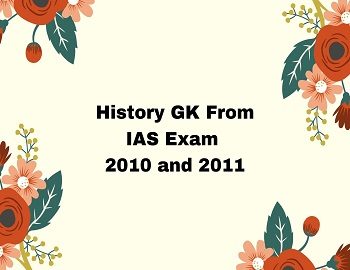
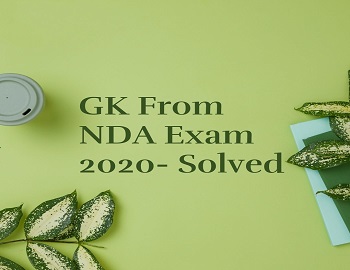
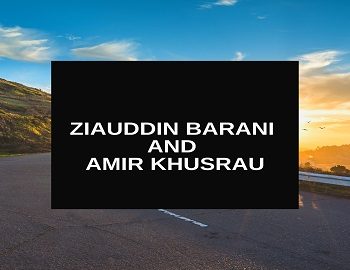
![Muslim League [December 30, 1906] 4 Muslim League](https://gkscientist.com/wp-content/uploads/2021/05/Muslim-League.jpg)


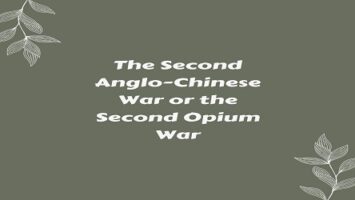

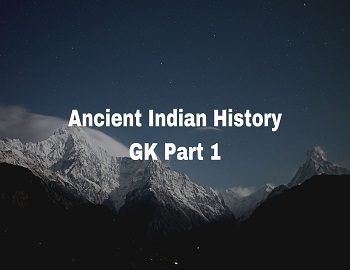
Comments (No)